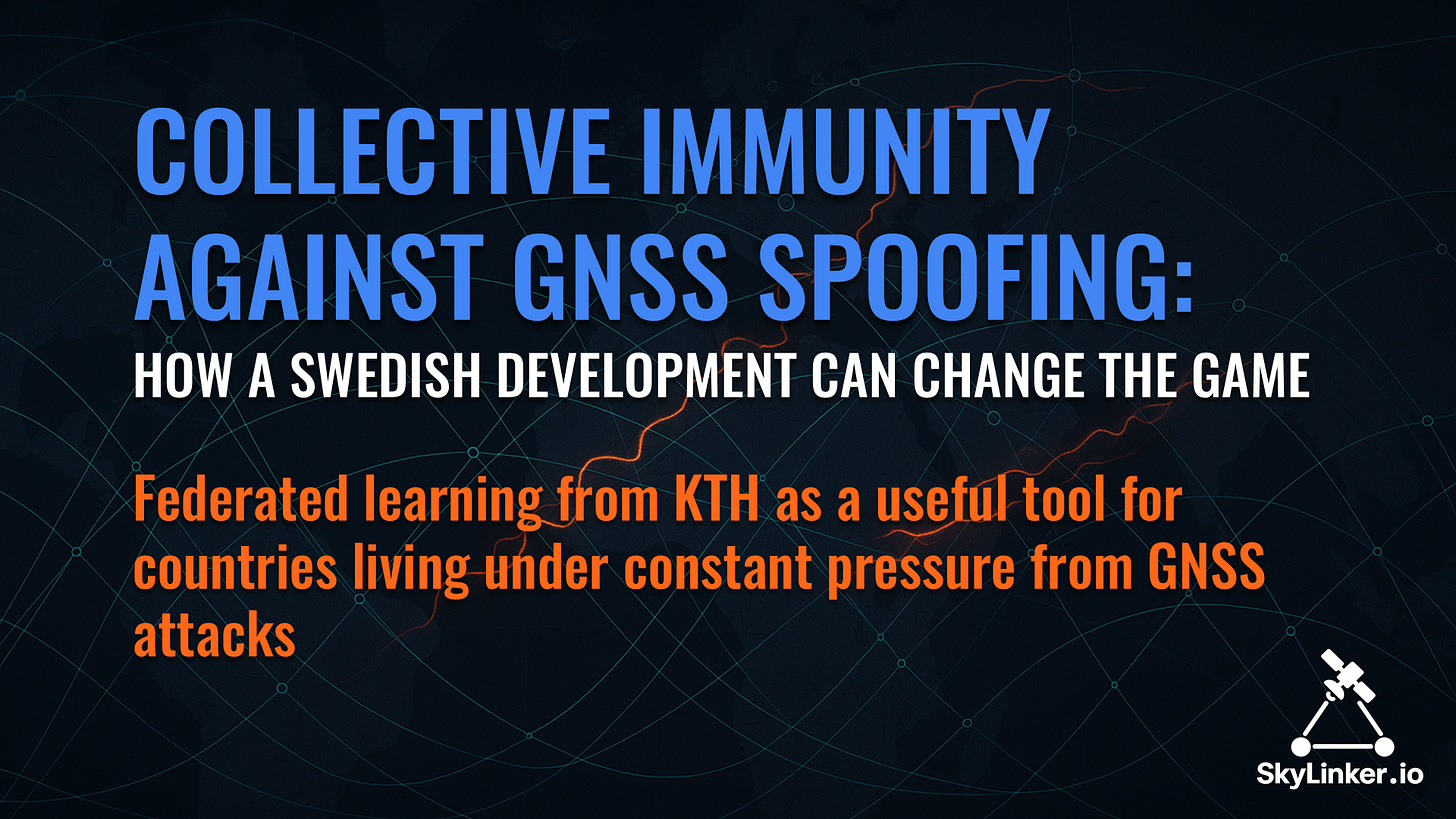Collective Immunity Against GNSS Spoofing: How a Swedish Development Can Change the Game
Federated learning from KTH as a useful tool for countries living under constant pressure from GNSS attacks
Satellite navigation is a silent infrastructure, without which the modern world would collapse. It is unnoticeable but irreplaceable: from Google Maps in your pocket to coordinates for drones, from synchronizing bank transactions to operating power grids. And that is precisely why it has become a target: GNSS signals are easy to fake. It takes only a few false waves to make an airplane “see” a different course, an autonomous truck loses orientation, and communication systems fall out of sync.
Ukraine and the Baltic countries know this problem not from books. In the Kaliningrad region, spoofing and jamming of GPS/Galileo signals have become commonplace: pilots report loss of navigation, and civilian vessels are forced to switch to old instruments. For Ukraine, it is also a daily reality—the concentration of active enemy and own EW (Electronic Warfare) assets is unprecedented.
The Concept of Collective Protection
Against this background, the new work by researchers from the KTH Royal Institute of Technology in Stockholm—Wenjie Liu and Panos Papadimitratos—looks particularly interesting. They propose not just another algorithm for a single receiver, but a concept of collective protection against spoofing: a system where smartphones, cars, and drones learn to detect fake signals together, share knowledge with each other, and do not leak private data in the process.
The essence of the idea lies in federated learning. Each device has a local model that analyzes data from its GNSS receiver, motion sensors, and network positioning. The system itself creates “labels“—if the coordinates from satellites diverge from what the accelerometer or the network shows, it’s a sign of a fake. Furthermore, the device does not send its coordinates or raw measurements to the server—only the model parameters. In the cloud, they are aggregated into a single “global brain“ that is returned to all devices. The more participants, the stronger the collective immunity.
Real-World Testing
This is not a laboratory experiment. The system was tested at Jammertest 2024—an international testing ground where jamming and spoofing are intentionally created. Six different smartphones—from modern Pixel 8 to older Galaxy S9—recorded data on automotive routes. And the result proved significant: federated learning provided a detection accuracy of 87.4%, which is higher than classical positional methods (83.5%) and even centralized deep models (86.6%). The system remained robust even when training was done on one phone model and testing on others, or when the routes did not match. This implies the ability to generalize in conditions of heterogeneous data.
Practical Value
A smartphone or a drone can instantly signal spoofing: slow down a car, switch a drone to a safe mode, or warn a dispatcher. Without disclosing coordinates, the server sees where suspicious signals arise and forms maps of GNSS terrorism “hotspots,” which can be used by aviation, maritime services, or the military. For critical infrastructure, this is another layer of security: autopilots, power grids, and financial systems receive protection against hidden manipulations.
Challenges and Limitations
There are also challenges. So far, the system has been tested offline. In a real environment, delays in mobile networks, packet loss, and the risk that an attacker might try to submit false model updates will have to be taken into account. Additional mechanisms are needed—robust aggregation algorithms and parameter quality control. However, these are engineering tasks, not conceptual barriers.
Why This Is Important for Ukraine and the Baltics
Where spoofing has become the norm—in the Baltic Sea or on the front line in Ukraine—this early warning technology can become critical. For civil aviation pilots, it is a way to quickly understand: “I am in a zone of deception“. For the Ukrainian military—a chance to automatically switch drones to INS (Inertial Navigation System) or backup channels when satellite navigation is threatened.
Conclusion
The development from KTH is not an abstract theory, but a hint at a new model of collective GNSS protection. In a world where GNSS terrorism has become commonplace, and for Ukraine and the Baltic countries—a daily reality, such an approach can turn into a real shield. Ukrainian specialists have enough knowledge and experience to use this idea in their own developments. Maybe it is worth a try right now?


